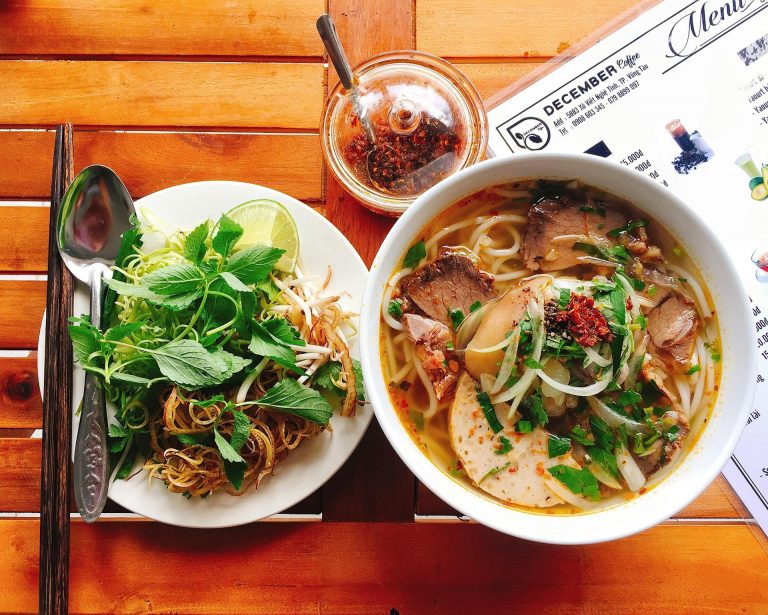I used to think vegetarian travel meant resigning myself to sad hotel breakfast buffets and mystery vegetables that tasted like they’d been steamed sometime during the previous administration. But here’s the thing: being vegetarian on the road doesn’t have to mean suffering through another plate of limp lettuce while your travel companions devour the local cuisine. In fact, some of my most memorable meals abroad have been entirely plant-based, and I wasn’t even trying that hard.
The trick isn’t about restriction. It’s about knowing where to look, what to ask, and how to turn potential food anxiety into an actual adventure. Because let’s face it—vegetarian eating while traveling can either be your worst nightmare or the reason you fall in love with a place. I’m going to help you make sure it’s the latter.

Why Vegetarian Travel Is Actually Easier Than You Think
Here’s something nobody tells you: huge chunks of the world have been doing vegetarian food longer and better than most Western countries. India alone has hundreds of millions of vegetarians. Parts of the Mediterranean have been perfecting vegetable-forward cuisine for millennia. Even Southeast Asia, despite its fish sauce obsession, has Buddhist vegetarian traditions that’ll blow your mind.
The problem isn’t that vegetarian food doesn’t exist abroad—it’s that we often don’t know how to find it or communicate what we need. I learned this the hard way in rural Spain when I confidently ordered what I thought was a vegetable stew, only to discover it was swimming in chorizo. My Spanish wasn’t great, and apparently “sin carne” (without meat) doesn’t always register seafood or pork products as “meat” in traditional cooking contexts. Live and learn, right?
Research Before You Go (But Not Too Much)
I’m not saying you need to become a culinary anthropologist before every trip, but spending thirty minutes on research can save you from eating nothing but french fries for a week. Start with HappyCow, which is basically the vegetarian traveler’s bible. It’s a global directory of vegetarian and veg-friendly restaurants, and the user reviews are usually spot-on.
But here’s where I differ from the guidebooks: don’t over-plan. Some of the best vegetarian meals I’ve had came from wandering into random places that looked busy with locals. Research gives you a safety net, not a prison.
Look up common vegetarian dishes in your destination country. In Thailand, learn that “jay” means vegetarian (usually vegan, actually). In Italy, know that “quattro formaggi” pizza exists everywhere. In Mexico, “sin carne, sin pollo, sin pescado” covers your bases. These phrases become your passport to actual food.
Master the Art of Communication
This is perhap the most crucial skill: learning to communicate your dietary needs without sounding demanding or, worse, entitled. I’ve found that a little cultural humility goes a long way. Instead of launching into a lecture about your lifestyle choices, keep it simple.
I usually say something like: “I don’t eat meat or fish—what do you recommend?” This puts the server in the position of being helpful rather than defensive. In countries where English isn’t widely spoken, having your requirements written down in the local language on your phone is a game-changer. Google Translate isn’t perfect, but it’s close enough.
Here’s a pro move: learn the local words for meat, chicken, fish, and eggs. Then you can scan menus independently and ask informed questions. It shows respect for the culture and makes interactions smoother.
Embrace Local Vegetarian Cuisines
Some cuisines are naturally vegetarian-friendly, and traveling to these places feels like winning the food lottery:
India: Obviously. From South Indian dosas to North Indian dal makhani, you could eat vegetarian here for years without repetition. The concept of “pure veg” restaurants means you’ll never have to explain anything.
Middle East: Mezze culture is your friend. Hummus, baba ganoush, falafel, tabbouleh, fattoush—these aren’t side dishes, they’re the main event. I’ve had meals in Lebanon that were entirely vegetarian and left me more satisfied than any steakhouse ever has.
Ethiopia: Injera with various vegetable wats (stews) during fasting days. Ethiopian Orthodox fasting excludes all animal products, which means restaurants have extensive vegan menus on Wednesdays and Fridays.
Southeast Asia: Buddhist vegetarian restaurants are everywhere if you know where to look. The mock meats can be eerily good—I’ve had “duck” in Bangkok that made me double-check with the server three times.
When Vegetarian Options Are Scarce
Okay, but what about Argentina? Or Mongolia? Or anywhere that considers meat not just food but a cultural cornerstone? I’m not going to lie—these destinations require more creativity.
Strategy one: Embrace breakfast and lunch. Many places that serve meat-heavy dinners have lighter breakfast and lunch options. That Spanish hotel breakfast buffet I mocked earlier? Actually saved me more than once.
Strategy two: Shop at markets and grocery stores. Some of my favorite travel days have involved assembling picnics from local markets—fresh bread, cheese (if you eat dairy), olives, fruit, nuts. It’s cheaper, often healthier, and you get to interact with local vendors.
Strategy three: Ask for modifications. Most kitchens can make you a vegetable pasta or rice dish even if it’s not on the menu. Don’t be afraid to ask. The worst they can say is no.
Strategy four: Carbs are your friend. I know, I know—not the health advice you wanted. But sometimes survival means eating more bread and potatoes than usual. That’s okay. You’re traveling, not competing for a fitness magazine cover.
Airport and Transportation Survival
Let me tell you about the time I got stuck in the Frankfurt airport for eight hours with limited vegetarian options. It was not my finest moment. I ended up eating three pretzels and contemplating life choices.
Learn from my mistakes: always carry backup snacks. I’m talking protein bars, nuts, dried fruit—things that won’t get confiscated by customs but will keep you from getting hangry. Because hangry you makes bad decisions, like paying $15 for a sad salad at an airport kiosk.
For long train or bus journeys, pack food. In many countries, long-distance transportation means limited food options, and those options usually involve mystery meat sandwiches. I’ve become that person with the tupperware container of homemade sandwiches on overnight trains, and I have zero shame about it.
The Language Card Trick
This might sound old-school, but having a printed card in the local language explaining your dietary restrictions is clutch. Include:
- I am vegetarian
- I do not eat meat, poultry, or fish
- I do eat vegetables, grains, dairy (if applicable), and eggs (if applicable)
- Please no meat stock or fish sauce
Hand this to servers or show it to street food vendors. It removes ambiguity and makes their job easier. I’ve had chefs come out from the kitchen to confirm ingredients with me, which led to some lovely conversations and occasionally special off-menu dishes.
Street Food: Proceed with Curiosity and Caution
Street food is where things get interesting. Some of the world’s best vegetarian food comes from street carts—Indian chaat, Mexican elotes, Middle Eastern falafel. But you need to ask questions because that innocent-looking noodle dish might be cooked in pork fat or topped with shrimp.
Watch what’s being prepared. Point at vegetables and give a thumbs up. Point at meat and shake your head. This universal language works surprisingly well. I’ve communicated entire orders through gestures and pointing, and usually gotten exactly what I wanted.
Apps and Resources That Actually Help
HappyCow: Already mentioned, but worth repeating. Download the app.
Google Maps: Read reviews and look at photos. You can filter by “vegetarian options” in many regions.
VeggieHotels: If you want to stay somewhere that gets it, this directory lists vegetarian and vegan accommodations worldwide.
Local Facebook Groups: Search for “vegetarian [city name]” or “vegan [city name]” groups. Locals always know the best spots.
The Accommodation Advantage
Staying at places with kitchens—Airbnbs, hostels with kitchen access, aparthotels—gives you control. Even if you don’t cook full meals, being able to make breakfast or pack lunch takes pressure off dinner. Plus, shopping at foreign grocery stores is weirdly fun. You discover products that don’t exist at home and get a glimpse into daily life.
I remember staying in a tiny apartment in Barcelona and making simple pasta with local vegetables and Spanish olive oil. It cost maybe five euros and tasted better than most restaurant meals because I’d picked everything myself from the market.
Build a Flexible Mindset
Here’s the uncomfortable truth: if you’re vegetarian for health or environmental reasons, you might be more flexible than if it’s for ethical reasons. I respect everyone’s boundaries, but I also think perfectionism can ruin travel. If you accidentally eat something cooked in chicken stock, the world doesn’t end. Learn from it, move on.
That said, if you’re strictly vegetarian or vegan for ethical reasons, be prepared to advocate for yourself clearly and sometimes repeatedly. It’s not about being difficult—it’s about maintaining your values while experiencing the world.
When in Doubt, Go Ethnic
In almost any major city worldwide, you can find Indian, Middle Eastern, or Ethiopian restaurants. These cuisines understand vegetarianism as a mainstream choice, not a quirky Western trend. When I’m tired of explaining myself or worried about cross-contamination, I head to these places. They’re often run by people who are vegetarian themselves or cook for large vegetarian communities.
The Social Aspect
Traveling with non-vegetarians? This requires communication and compromise. I usually suggest that half the restaurants we choose should be vegetarian-friendly for me, and I’ll happily tag along to steakhouses for them—I can always find something. Most reasonable people are fine with this arrangement.
If you’re being hosted by locals, give them advance notice about your diet. It’s much easier for them to plan around your needs than to scramble at mealtime. And if they’ve gone to effort to accommodate you, show genuine appreciation. That’s just being a decent human.
The Unexpected Benefits
Being vegetarian while traveling has led to some of my most interesting experiences. I’ve taken cooking classes to learn how to make local vegetarian dishes. I’ve had long conversations with restaurant owners about their grandmothers’ recipes. I’ve discovered hole-in-the-wall places that tourists never see because they’re not in the steakhouse district.
Food restrictions force you to engage more deeply with a place. You can’t be passive about eating when you’re vegetarian abroad—you have to be curious, ask questions, and sometimes take risks. That engagement is what makes travel meaningful.
Final Thoughts (Sort of)
Look, I’m not going to pretend that vegetarian travel is always easy. There will be moments of frustration, meals that disappoint, and times when you wonder why you couldn’t just eat whatever’s in front of you. But there will also be incredible meals, unexpected discoveries, and the satisfaction of knowing you stayed true to yourself while exploring the world.
The key is preparation mixed with adaptability, confidence mixed with humility, and always—always—carrying snacks. You’ve got this. The world is more vegetarian-friendly than you think, and even when it’s not, there are ways to make it work.
Now go forth and eat well. Or at least eat reasonably well. Sometimes that’s the best we can hope for, and honestly? That’s perfectly fine.
Frequently Asked Questions
Question: How do I find vegetarian restaurants in countries where vegetarianism isn’t common?
Answer: Use HappyCow and Google Maps with reviews and photos enabled. Search for Indian, Middle Eastern, or Ethiopian restaurants as backup options. Join local Facebook groups or Reddit communities for recommendations. Check if your accommodation has kitchen facilities so you can prepare some meals yourself.
Question: What should I do if I accidentally eat meat while traveling?
Answer: Don’t panic. Learn the phrases you need in the local language for next time, consider carrying translation cards, and remember that mistakes happen. Use it as a learning experience rather than beating yourself up. If you have ethical concerns, reaffirm your commitment moving forward.
Question: Are there vegetarian-friendly airlines?
Answer: Most major airlines offer vegetarian meal options if you request them 24-48 hours before your flight. Look for VGML (vegetarian), VLML (lacto-ovo vegetarian), or AVML (Asian vegetarian) options when booking. Air India, Emirates, and Singapore Airlines are particularly known for good vegetarian options.
Question: How do I handle language barriers when explaining I’m vegetarian?
Answer: Learn key phrases in the local language: “I don’t eat meat/fish/chicken.” Use Google Translate to create a card explaining your diet. Point at menu items and ask questions. Use hand gestures—pointing at vegetables with approval works universally. Show photos of acceptable foods on your phone.
Question: Is it rude to ask restaurants to modify dishes for vegetarians?
Answer: Not if you do it politely. Most restaurants are happy to accommodate reasonable requests, especially during non-peak hours. Ask what they recommend rather than demanding changes. Show appreciation when they help. In cultures with strong hospitality traditions, accommodating dietary needs is considered normal.
Question: What are the most vegetarian-friendly countries to visit?
Answer: India leads the pack with extensive vegetarian infrastructure. Israel, Taiwan, Singapore, Thailand, and Italy all have excellent vegetarian options. UK cities like London and Brighton are very veg-friendly. Ethiopia, Sri Lanka, and Nepal also cater well to vegetarians due to religious traditions.
Question: Can I eat street food as a vegetarian?
Answer: Absolutely. Some of the best vegetarian food comes from street vendors—falafel in the Middle East, dosas in India, elotes in Mexico. Watch what’s being prepared, ask questions, and look for vendors with visible vegetable-focused offerings. Pointing and gesturing works well when language is a barrier.
Question: What should I pack for vegetarian travel?
Answer: Protein bars, nuts, dried fruit, and other non-perishable snacks for emergencies. Translation cards in local languages. A list of vegetarian-friendly restaurants saved offline. Portable utensils if you plan to buy food from markets. Emergency instant noodles (check labels—many contain animal products).
Question: How do I handle social situations where refusing meat might offend?
Answer: Be gracious but firm. Explain your dietary practice simply without lecturing. Thank hosts profusely for accommodation efforts. Offer to bring vegetarian dishes to share. In some cultures, saying you have dietary restrictions for health or religious reasons is better understood than ethical vegetarianism.
Question: Are all-inclusive resorts vegetarian-friendly?
Answer: Most are, but quality varies. Research beforehand by reading reviews from vegetarian travelers. Email the resort to ask about vegetarian options. Buffet-style dining usually offers more choices. Mediterranean and Asian resorts tend to have more vegetarian variety than some Caribbean locations.
Question: What if my travel companion isn’t vegetarian?
Answer: Compromise on restaurant choices—alternate between vegetarian-focused places and restaurants with good vegetarian options. Use it as an opportunity to expose them to great plant-based food. Stay flexible about joining them at meat-centric restaurants where you can find sides or modifications. Communicate needs clearly from the start.
Question: Do I need to take supplements while traveling vegetarian?
Answer: Not necessarily, but carrying a multivitamin isn’t a bad idea if you’re worried about nutritional gaps during travel. Focus on getting protein from legumes, nuts, dairy (if you eat it), and eggs (if you eat them). Most short-term travel won’t cause deficiencies if you’re eating varied foods.
Top Vegetarian Travel Products and Resources
HappyCow – The essential app and website for finding vegetarian and vegan restaurants worldwide, with user reviews and photos to help you navigate any destination.
VeggieHotels – A curated directory of vegetarian and vegan-friendly accommodations across the globe, from budget hostels to luxury resorts.
Airbnb – Book accommodations with kitchens so you can prepare your own meals and shop at local markets, giving you complete control over your vegetarian diet.
Google Translate App – Download languages offline and use the camera feature to translate menus in real-time, essential for understanding ingredients and dishes.
RXBAR Protein Bars – Clean ingredient protein bars that travel well and provide emergency nutrition when vegetarian options are scarce (check labels for egg content if vegan).
Lonely Planet India Guide – Essential reading for the most vegetarian-friendly destination on earth, with detailed food coverage and regional specialties.
Booking.com – Filter accommodations by “kitchen facilities” and read reviews mentioning vegetarian options nearby to find ideal places to stay.
Ethiopian Airlines – Consistently offers excellent vegetarian meal options on flights and connects to Ethiopia, a top vegetarian travel destination.
VegVoyages – Organized vegetarian and vegan tours to destinations worldwide, taking the planning stress out of plant-based travel.
The Vegetarian Traveler by Jed and Susan Civic – Classic guidebook with country-by-country advice, essential phrases, and cultural insights for vegetarian travelers.
Whole Foods Market Packaged Snacks – Stock up on travel-friendly vegetarian snacks before your trip—dried fruits, nuts, crackers, and energy balls that won’t get confiscated.
India Someday Travel Planning – Custom India trip planning service that understands vegetarian travel needs and can craft food-focused itineraries.
Veganuary Global Resources – Beyond January, this site offers city guides, restaurant recommendations, and cultural tips for plant-based eating worldwide.
Forks Over Knives App – Whole-food plant-based recipes you can adapt while traveling with kitchen access, plus nutritional guidance.
World Nomads Travel Insurance – Comprehensive travel insurance that covers health issues, important if dietary restrictions lead to limited food options affecting your wellbeing.
Komoot App – Route planning app that can help you map walks to vegetarian restaurants and markets in unfamiliar cities.
Meetup.com Vegetarian Groups – Find local vegetarian and vegan meetups in cities worldwide to connect with like-minded travelers and get insider restaurant tips.
Taiwan Tourism Bureau Resources – Taiwan is a vegetarian paradise with Buddhist influences—their official tourism site has excellent food guides.
Middle East Airlines – Lebanese carrier with naturally vegetarian-friendly meal options reflecting Mediterranean cuisine traditions.
Veggie Passport by The Vegan Society – Pocket-sized booklet with phrases in multiple languages explaining vegetarian and vegan diets—old school but effective.




